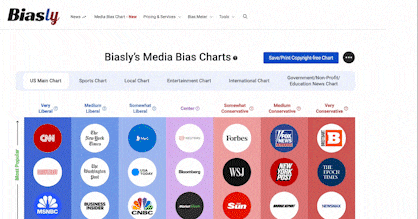
How biased are the news articles you’re reading on your daily lunch break? However neutral news outlets might claim to be, some degree of bias whilst not always necessarily intentional, is at least inevitable. Bias can be blatant and obvious, but it can also be subtle and much more difficult to detect.
An increasingly polarised political sphere, and news outlets playing to the emotions of their target audiences, are just two of the reasons why the news has become more biased in recent years. If readers are to be empowered to make informed voting decisions, and to feel confident that the news they are receiving is as safe and neutral as possible, then the monitoring and study of news bias will continue to play a vital role.
How can news bias be tracked then? Some organizations have sought to track media partisanship by simply asking people. According to a 2018 survey, Americans believe that 44% of the news they consume is inaccurate. These studies are crucial in understanding people’s perceptions of news outlets and provide interesting insights into how bias is influenced by an individual’s own political persuasion.
Below are the largest U.S. media sources that appear repeatedly across the industry as containing the most biased liberal or conservative-leaning views, not in any particular order.
Liberal
- Vox
- New York Times
- The Atlantic
- MSNBC
- CNN
- Buzz Feed
- The New Yorker
- Huffington Post
- Washington Post
- The Guardian
Conservative
- Fox News
- OAN
- The Federalist
- Wall Street Journal
- Breitbart
- NY Post
- Daily Wire
- Newsmax
- The Blaze
- Epoch Times
Never in history has the news been more powerful. According to this ScienceDirect article, the fear is that social media is programming the behaviors of people and ‘has the power to influence opinions of masses which in turn conditions and influences their day-to-day activities.’ Reading widely across many news sources, particularly those which challenge your own political leaning, is key to ensuring that you are obtaining an optimum level of accuracy about stories in the news. Biasly shares stories from many news outlets across the political aisle, allowing you to stay safe and well-informed.
We also understand that readers may want to choose particular news that may have a more liberal or conservative slant. This is where our PoliFilter comes in useful – enabling you to choose news articles depending on your own political preferences. We want to provide news to everyone across the political sphere, and our advanced AI allows us to rate articles using algorithms and detailed word analysis.
How biased are the news articles you’re reading on your daily lunch break? However neutral news outlets might claim to be, some degree of bias whilst not always necessarily intentional, is at least inevitable. Bias can be blatant and obvious, but it can also be subtle and much more difficult to detect.
At Biasly, we use AI and algorithms to create our Media Bias Ratings, giving readers a greater insight into the bias of hundreds of news articles every day.

















































